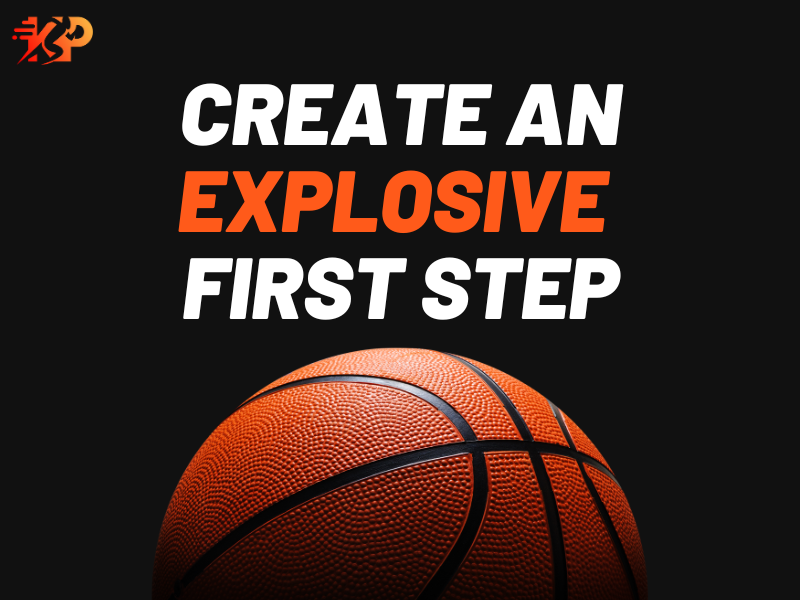Creating Explosive Soccer Athletes

By Mark Keil, CSCS
Posted on August 1, 2024

By Mark Keil, CSCS
Posted on August 1, 2024

Speed and agility are critical components that significantly impact a soccer athlete’s performance.
The ability to change direction efficiently and develop explosive acceleration speed is crucial to being a high-performing soccer athlete.
This article looks at how speed and agility training can improve soccer performance, examining their impact on various aspects of the game, including attacking, defending, transitions, and injury reduction.
“My son has been going here for the last few months. We have seen a huge improvement in his sprinting! He has so much more confidence in his running now. It is amazing the difference we (and others) have seen. …”
Corrine, High School Soccer Parent
Speed in Soccer: An Overview
Speed in soccer primarily refers to sprinting speed- the ability to run at maximum velocity over short distances.
Sprinting speed is crucial in several scenarios, such as Breakaways (when the athlete outpaces defenders and creates goal-scoring opportunities), Defensive Recovery (when the defender catches up with attackers and stops potential goals), and Pressing (when the athlete uses their speed to close down opponents quickly, forcing them into making mistakes).
In soccer, athletes rarely run in straight lines for extended periods; instead, they must accelerate rapidly over short distances.
Agility in Soccer
Change of Direction Quickness
Agility, the athlete’s ability to change direction quickly and efficiently, is vital in soccer.
Soccer players must often maneuver through tight spaces, evade opponents, and maintain balance under pressure. For example, in dribbling the ball, the athlete must make quick cuts and turns, helping them beat defenders and retain control of the ball. When defending, the defender will use agility to match the movements of attackers, making it more difficult for the attacker to find an opening.
Agility encompasses balance and coordination, which are crucial for maintaining control and stability in challenging situations. Balance and coordination are also important for ball control, as the athlete must maintain balance and coordination to control the ball more effectively, especially under pressure.
Agility also involves quick reaction times and is critical for interceptions, goalkeeping, and 1v1 situations.
Combined Impact of Speed and Agility
In attack, speed and agility allows players to create and exploit spaces, break defensive lines, and increase the game’s tempo. Fast and agile attackers are challenging to mark, often drawing multiple defenders and creating opportunities for teammates.
Speed enables players to stretch the defense, while agility allows them to navigate tight spaces and deliver precise passes or shots. Speed also helps defenders close down opponents swiftly and recover positions after offensive plays. Together, these attributes make defenses more resilient and adaptable.
Defensively, speed and agility help players cover more ground, recover quickly, and stay ahead of attackers. Agile defenders can shadow attackers’ movements, making it difficult for them to find space.
Speed and agility are critical during transitions between defense and attack.
A team that can transition quickly can catch opponents off guard, creating counter-attacking opportunities. Conversely, quick defensive transitions help prevent counter-attacks and regain possession swiftly.
These fast transitions require players to be both explosive and agile to cover ground efficiently and change direction as needed.
Speed, Agility, and Injury Reduction
Speed and agility training also contribute to injury reduction (often referred to as ‘injury prevention’; I just don’t like to allude that it’s foolproof). Improved agility reduces the risk of injuries by enhancing players’ ability to avoid collisions and recover from awkward movements.
Speed training strengthens muscles and joints, making them more resilient to the game’s physical demands. Furthermore, these training regimens often include exercises that improve flexibility and balance, reducing the likelihood of strains and sprains.
How to Enhance Speed and Agility for Soccer Athletes
To enhance speed and agility, players should engage in specific training programs that include:
Sprint Drills: Repeated sprints with varying distances and intensities to improve sprinting speed and acceleration.
Plyometrics: Exercises like jump squats and box jumps to develop explosive power and agility.
Agility Drills: Cone drills, ladder drills, and shuttle runs to improve directional changes and coordination.
Endurance Training: Interval training and aerobic exercises to enhance endurance speed and maintain performance throughout the game.
Strength and Conditioning: Strength training is essential for developing the muscle power needed for speed and agility. Core strength, in particular, plays a significant role in maintaining balance and stability. Conditioning programs should include exercises that build overall strength and endurance.
Improving technical skills like dribbling, passing, and shooting while maintaining speed and agility is crucial. Players should practice these skills at game speed to simulate match conditions and improve their ability to perform under pressure.
Conclusion
Speed and agility are indispensable for high performing soccer athletes as they significantly impact a player’s on-field performance.
They enhance offensive and defensive play, facilitate quick transitions, and contribute to injury reduction.
By incorporating the right training programs, the soccer athlete can improve their speed and agility and gain a competitive edge in sport.
Looking for a Speed & Agility Training program near you? I train athletes every week here in Tulsa, Oklahoma. Click here to sign up your athlete to Try It FREE!
I’ve worked with D1 Collegiate Soccer Teams and a Professional Soccer Team. I’m certain this Speed & Agility Program will help them improve their performance in Soccer!
Training Resources



